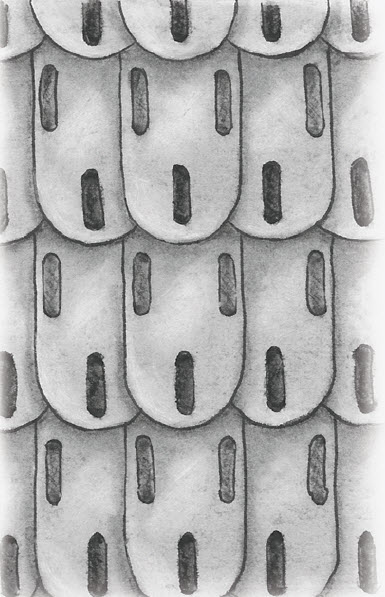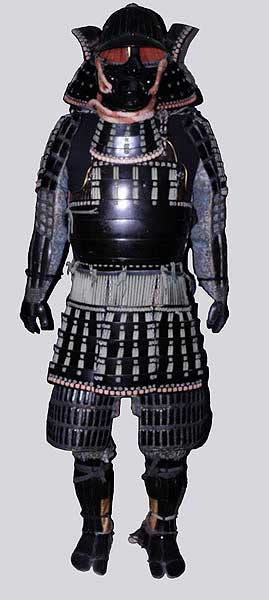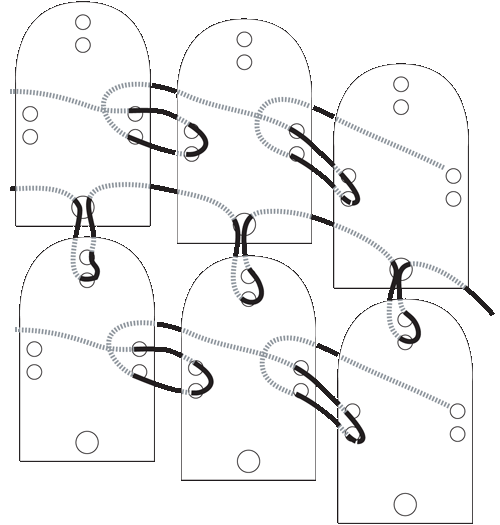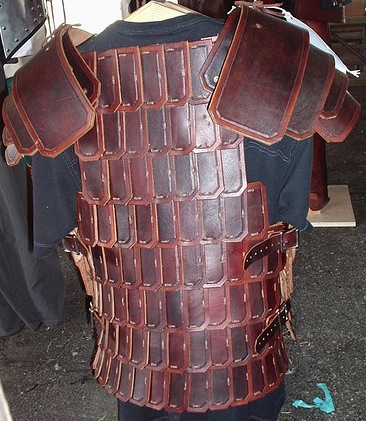Lamellar
A type of Armor
Contents
From the Rulebook
This armor is constructed from numerous plates connected to each other in an overlapping fashion by cord, chain link, or similar methods. Unlike scales the plates of this type of armor are firmly connected to each other in such a way that they resist penetration. Lamellar armor differs from other rigid metal armors in that it is not shaped to fit the body or articulated; mobility is instead provided by the small amount of flex and slack in the attachment between the individual plates. This armor provides good protection from both impact and penetration.
Armor Points
Base Armor Points: 4
Maximum Armor Points: 5 (6 if both the Superior Overlap and Heavy Gauge modifiers are used.)
Requirements
Plates must be at least 1.22mm (0.05")(18 gauge) steel. Plates must overlap by at least 10%. No backing is used for support; plates must connect directly to each other.
Armor Specific Modifiers
Fluted: +1
- Each plate has been fluted for additional strength and rigidity.
Heavy Gauge: +1
- Each plate is at least 1.58mm (0.06")(16 gauge).
Superior Overlap: +1
- 75% of plates overlap at least 25% of their surface area.
Gambeson: +1
- This armor is worn over a Gambeson.
See Also: General Modifiers
About Lamellar
Lamellar armour is a kind of personal armour consisting of small plates (lames) which are laced together in parallel rows. Lamellar differs from Scale by not needing a backing for the scales. It is made from pieces of lacquered leather, iron, steel or horn held together with silk, leather thongs, or cotton thread. When the lames are made of leather they would often be hardened by a process such as cuir bouilli or lacquering.
Lamellar was often worn as augmentation to existing armour, such as over a mail hauberk. The lamellar cuirass was especially popular with the Rus, as well as Mongols, Turks, Avars, and other steppe peoples as it was simple to create and maintain.
Lamellar is pictured in many historical sources on Byzantine warriors, especially heavy cavalry. It is thought that it was worn to create a more deflective surface to the rider's armour, thus allowing blades to skim over, rather than strike and pierce. Recent studies by Timothy Dawson of the University of New England, Australia, suggest that Byzantine lamellar armour was significantly superior to chain mail.
Sumerian and Ancient Egyptian bas-reliefs depicting soldiers have been argued as portraying the earliest examples of lamellar armour, particularly on chariot drivers, but it is not until the time of the Assyrians circa 900–600 BC that possible examples of lamellar begin to appear in the archaeological record. Among finds of Assyrian armour (often individual or unconnected scales) there are examples that can clearly be classified as scale armour as well as others that appear to be lamellar, and there exist a large number of finds whose function has proven difficult to determine. The extent to which either type was used is a debated topic. The earliest definite instance of true lamellar was found in China when twelve suits of lacquered lamellar were uncovered in a tomb at Sui-hsien, Hupei (dated to c. 433 BC). Lamellar was used by various cultures from this time up through the 16th century. It is generally associated with the Japanese Samurai, although the armour came to Japan from contact with Tang Dynasty China. It is also associated with the steppe people of southern Russia and Mongolia such as the Scythians and Sarmatians, and the Spartan Army.



